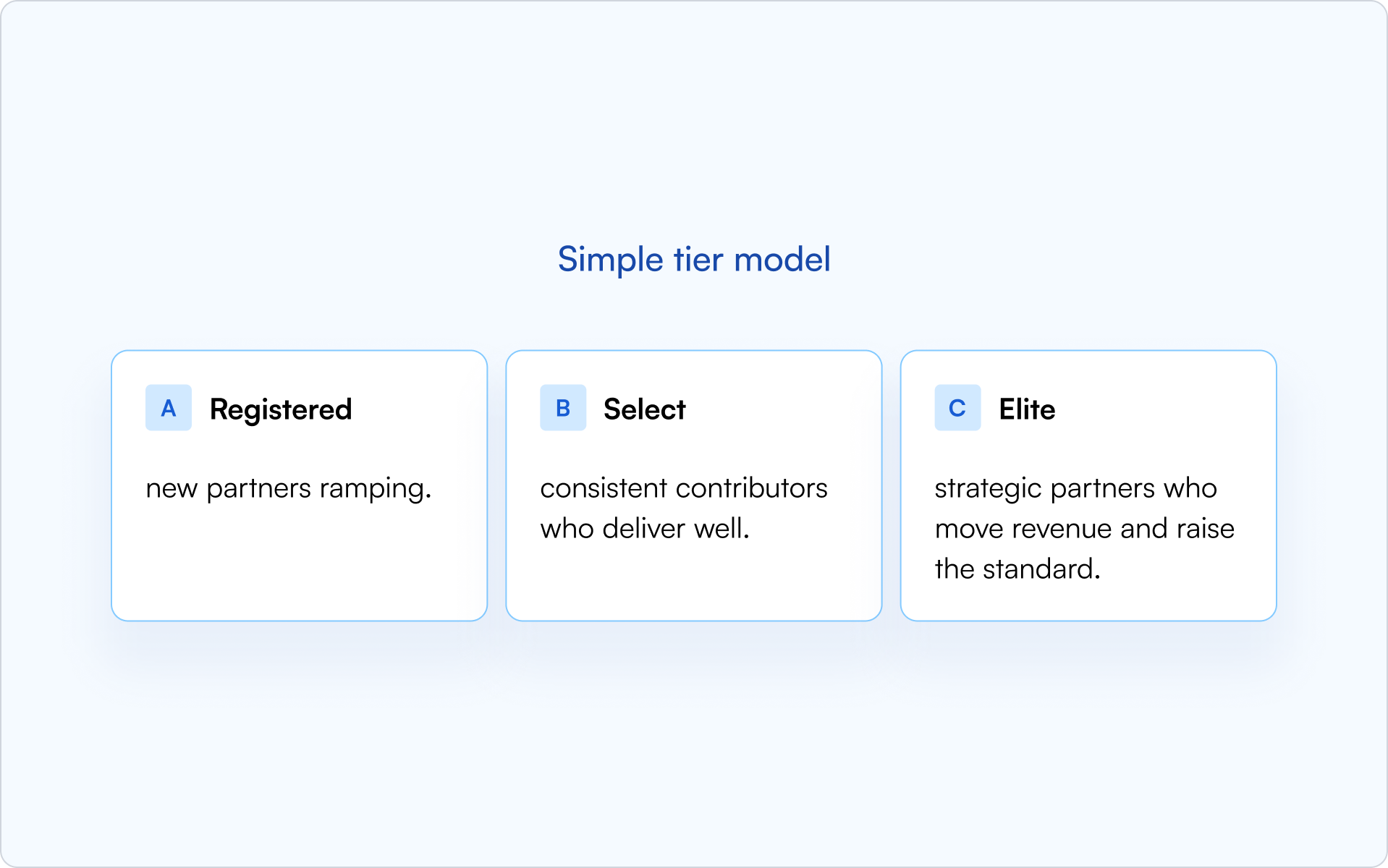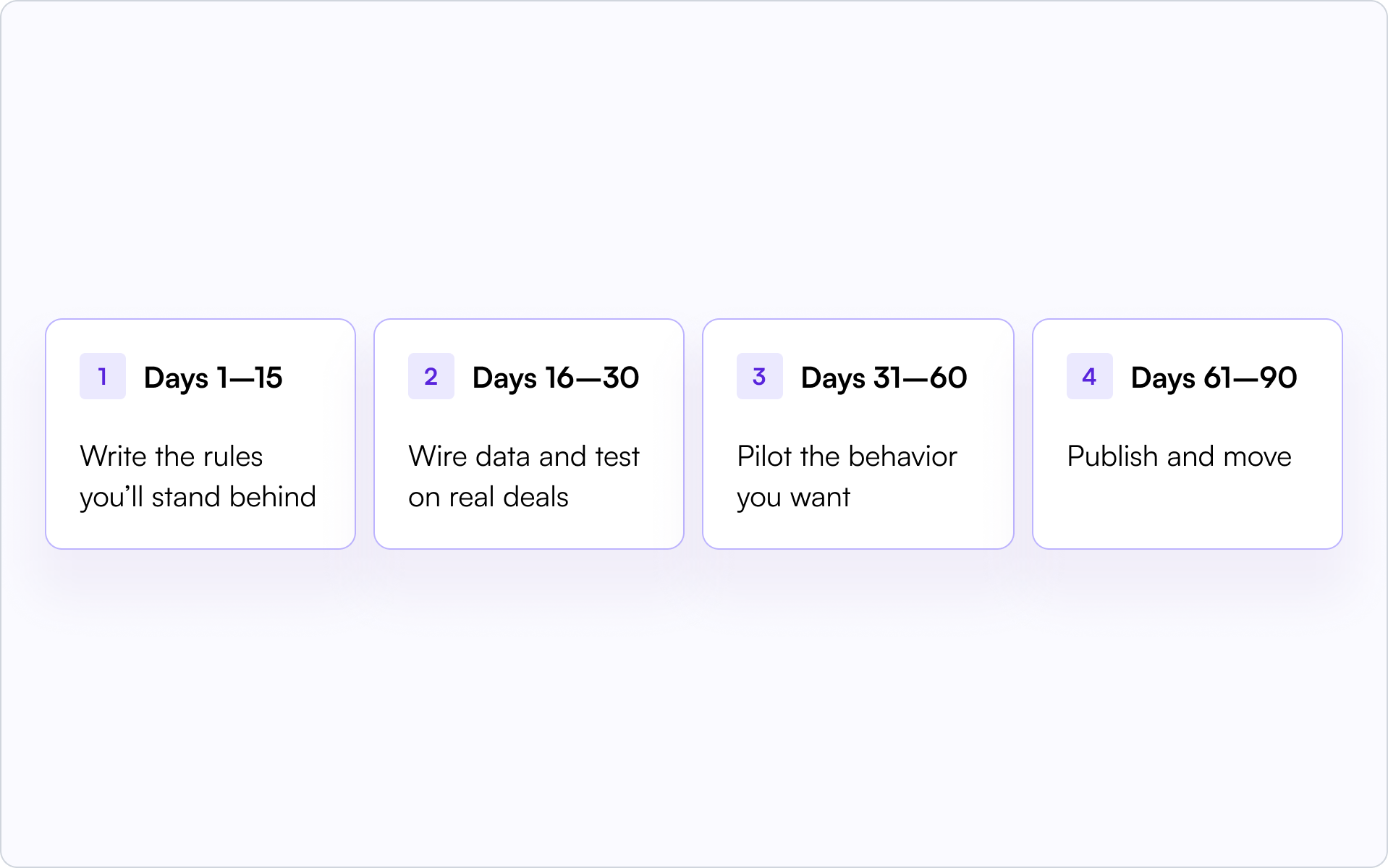Articles by Lorenz
How to Structure Partner Tiers in 2026 Without Overcomplicating It
The moment tiering becomes unavoidable
Every strong program starts with goodwill and a few trusted logos. Then momentum arrives. Sales asks who your best performing partners are. New names show up wanting in. Smaller firms request the same marketing resources your top tier partners get. You feel the program stretching. Without structure, every request becomes a fresh debate and your team slides from building relationships into refereeing exceptions.
Tiering is the turn. It gives you a shared path, not a pile of one-offs. It tells partners how to grow, gives customers a quick way to gauge quality, and lets your own company direct resources where they compound. The key is resisting the urge to design for every edge case. You want trail markers up a hill — not a hedge maze. Run it inside Introw and those markers become live dashboards, progress bars, and gentle reminders that keep everyone moving in the same direction.
As soon as the path exists, the conversations change. Partners stop asking for favors and start asking what it takes to level up. Sellers stop guessing and start routing work to the right partner on the first try. That’s your signal you’re ready for the simplest model that still tells the truth.
Pick the simplest model that still tells the truth
Forget five or seven levels. Three are enough and easy to explain to sellers and customers:

- Registered — new partners ramping.
- Select — consistent contributors who deliver well.
- Elite — strategic partners who move revenue and raise the standard.
This naming gives you a narrative partners can believe in: learn the motion, prove it reliably, then earn a seat at the table. The movement between levels should be obvious in one glance. That means a plain-English checklist anyone can recite, not a binder of rules that only administrators understand.
Once you’ve named the levels, the next question partners will ask is simple: “What actually moves us up?” That’s where you anchor to signals that are visible and fair.
What actually moves a partner up
Think in two buckets that reinforce each other. Outcomes prove value. Capabilities make that value repeatable. Keep both in view and your program rewards the right behavior without rewarding busywork.
Outcomes — the score on the board
- Revenue contribution on a rolling four-quarter window, including resold, sourced, and clearly influenced deals.
- Customer satisfaction after delivery — CSAT, renewal rate, or a consistently low escalation rate.
- Deal hygiene — registered opportunities with owners and next steps, visible in your CRM.
Capabilities — the ability to do it again
- Named certified individuals with the credentials your customers care about; publish how many per level.
- Solution depth proven by one validated integration, one packaged service, or a short practical — hands-on proof beats a quiz.
- Current proof on paper: a recent case, marketplace reviews, or a referenceable customer.
- For service partners, scope readiness to design, deploy, and support — evidenced by a real SOW or playbook.

If a criterion can’t be measured or linked to an artifact, skip it. In Introw, every requirement maps to a CRM field and rolls into a partner-facing checklist and progress bar, so there’s no mystery about what’s missing or what comes next.
The moment partners understand the climb, they’ll ask what makes the climb worthwhile. That’s where benefits matter — not as perks, but as accelerants.
Benefits that feel like progress (not perks for a slide)
Benefits should help partners win more business and deliver better outcomes. Start with a base set for everyone; then scale value with each level so progress feels real.
For all partners
- Directory listing with capabilities and regions.
- Access to training resources and sales tools.
- Deal registration with a response SLA your sales team respects.
As partners climb
- Priority support with named escalation contacts.
- Published, higher margins or commission rates — no renegotiation every deal.
- Exclusive enablement and office hours with product.
- Early access to new features — crucial for ISVs and top tiers.
- MDF with simple rules and quick approvals.
- Solution validation badges for proven integrations or plays.
- Curated introductions once delivery quality is proven.
Good benefits save time, increase win rate, or de-risk delivery. When partners feel those effects, they lean in. Now you’re ready to put structure and launch on a single timeline so the program moves from slideware to muscle memory.
One plan that combines structure and launch
To keep the flow simple, build the tiers and roll them out in one 90-day track. You’re writing rules, wiring data, proving behavior, and then publishing with confidence — all without derailing day jobs.

Days 1–15 — write the rules you’ll stand behind
Pick the three levels. Choose five to seven criteria across outcomes and capabilities, written in plain language. Map each to a CRM field you already track. Draft a one-page benefits table per level. If a rule feels hard to explain to a partner on a call, simplify it.
Days 16–30 — wire data and test on real deals
Build two views: an internal dashboard for partner managers and sales, and a partner-facing progress bar with the checklist. Pressure-test with five partners and two skeptical sellers; trim anything fuzzy. In Introw, connect the fields to a scorecard and enable automatic nudges when a partner nears an upgrade.
Days 31–60 — pilot the behavior you want
Run one co-sell play and one co-marketing play with a small cohort. Register opportunities live; confirm owners and dates; capture CSAT on the first delivery. Validate that benefits land — priority support feels faster, MDF is painless, early access drives real value.
Days 61–90 — publish and move
Announce initial placements and the exact path to the next level. Start quarterly reviews on a rolling four-quarter window. Offer a light, evidence-based appeal. Put executive QBRs on the calendar for Elite partners. In Introw, most of this is configuration — criteria become fields, fields power progress bars, and upgrades can trigger automatically once thresholds are met.
By the end of day 90, your program is no longer a document — it’s a rhythm. And rhythms are what partners stick with.
Keep the admin small and the signal strong
Healthy programs run on facts you already track, not side spreadsheets and folklore.
- One source of truth: performance, certifications, and proof links live on the partner record in your CRM.
- Quarterly rhythm: evaluate, decide, and communicate at quarter-end.
- Grace periods: if a partner narrowly misses, grant one quarter to recover with a written plan.
- Short appeals: partners submit evidence; you reply with dates and thresholds.
- No parallel systems: if it isn’t in the CRM, it doesn’t count.

Tiering works best when it’s simple, visible, and fair. Use three levels with a plain checklist that blends outcomes — revenue and customer satisfaction — with capabilities that prove repeatability. Publish tier-specific benefits that help partners win, wire criteria to your CRM, and run a quarterly rhythm with grace periods and light appeals. Keep exceptions rare and dated.
With Introw handling scorecards, progress bars, and notifications, your team can coach partners toward the next level instead of reconciling spreadsheets. Book a demo today to become a partnerships pro!


.svg)





















